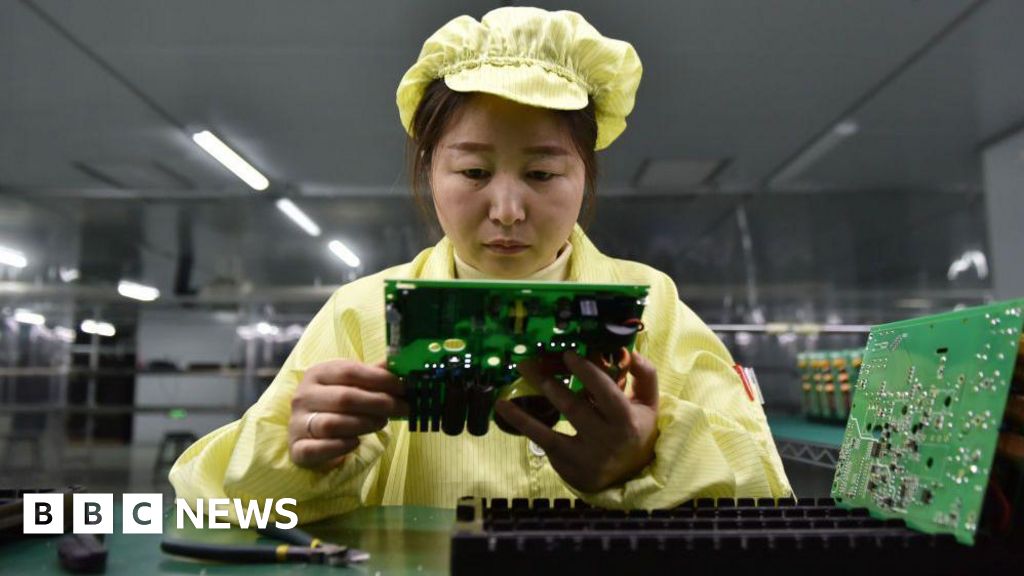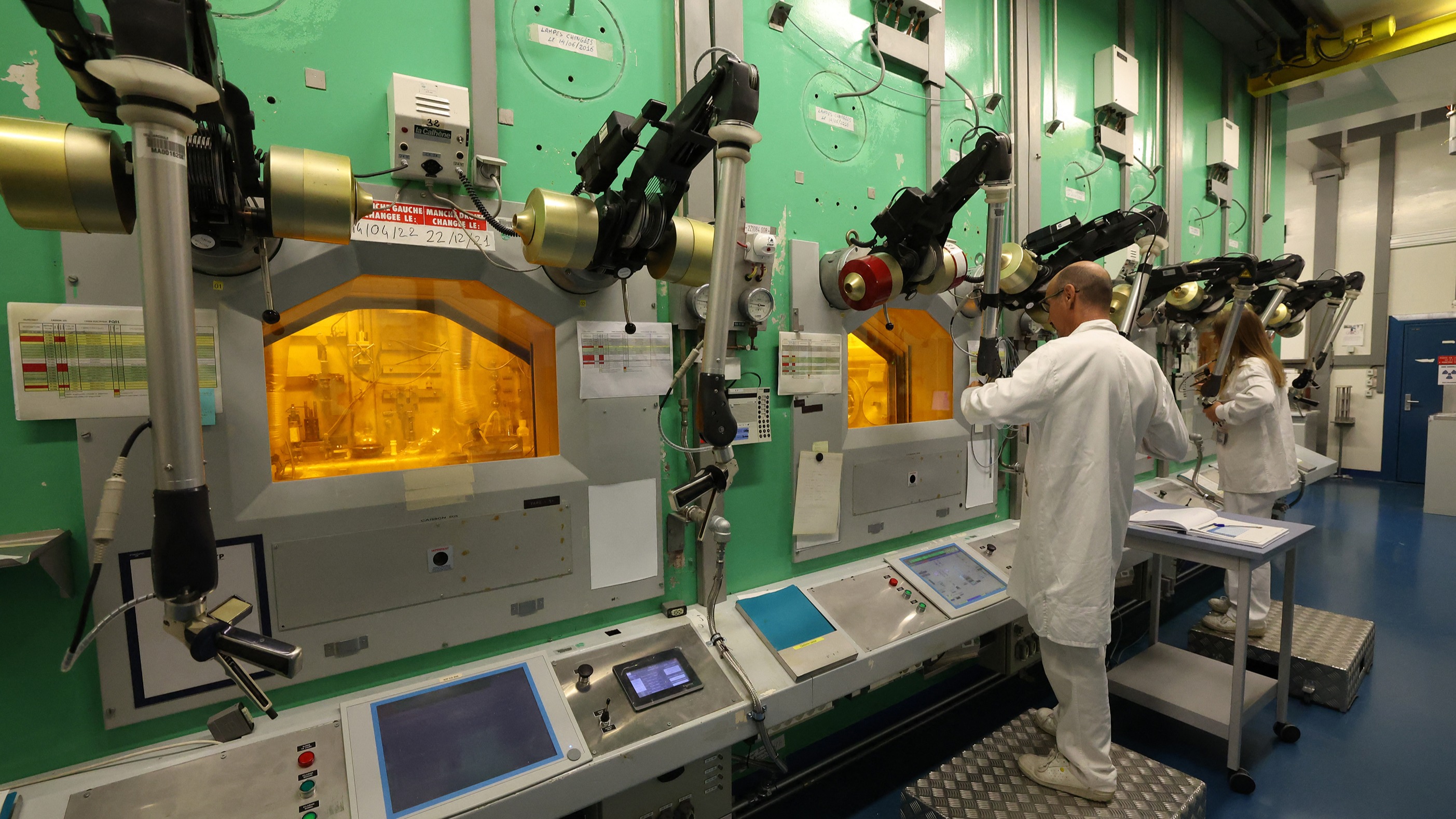Report on China’s Q3 Economic Performance and Implications for Sustainable Development Goals
SDG 8: Decent Work and Economic Growth
An assessment of China’s economic performance in the third quarter reveals significant challenges to achieving sustained and inclusive economic growth. The data indicates a deceleration that impacts the stability necessary for creating decent work for all.
- The economy expanded by 4.8% year-on-year, marking the slowest pace in a year and a decline from the 5.2% growth recorded in the previous quarter.
- This performance puts pressure on the government’s annual growth target of “around 5%”.
- Domestic spending remains “sluggish” despite government incentives, indicating difficulties in fostering inclusive domestic-led growth.
- The National Bureau of Statistics cited “strong resilience and vitality,” crediting the technology and business services sectors as key drivers supporting economic stability.
SDG 9 & SDG 12: Industry, Innovation, and Responsible Production
China’s industrial sector shows progress towards innovative and sustainable industrialization, particularly in high-technology fields. However, policies related to natural resource management present challenges to responsible production and consumption patterns on a global scale.
- Industrial output increased by 6.5% in September from a year earlier.
- Growth was particularly strong in sectors aligned with sustainable innovation, including 3D-printing, robotics, and electric vehicle manufacturing.
- The service sector, encompassing IT support, consultancies, and logistics, also expanded, contributing to a more diversified and resilient industrial base.
- However, the implementation of sweeping controls on rare earth exports, critical minerals for global electronics production, raises concerns regarding SDG 12 by impacting the sustainable management of natural resources and global supply chains.
SDG 11: Sustainable Cities and Communities
The persistent downturn in the property sector poses a direct threat to the goal of creating sustainable and resilient urban environments. The sector’s instability has wide-ranging implications for the national economy and the well-being of communities.
- The real estate sector, which constitutes about a third of the Chinese economy, remains a major impediment to growth.
- Investment in real estate fell by 13.9% in the year leading up to September.
- The market is characterized by a sharp downturn, including falling home prices, shrinking sales, and instances of abandoned developer projects, undermining the provision of adequate and safe housing.
- Experts identify the housing market as the “major drag on China’s economic growth” in the long term, impacting the financial stability of local governments and the sustainability of urban development.
SDG 17: Partnerships for the Goals
International trade tensions present a significant obstacle to fostering a global partnership for sustainable development. The recent escalation in trade disputes undermines the stable and predictable multilateral trading system envisioned by SDG 17.
- Renewed trade tensions with the United States, following China’s export controls and subsequent US tariff threats, have disrupted a fragile trade truce.
- Prior to the flare-up, Chinese exports had risen by 8.4% in September, demonstrating the economic benefits of stable trade partnerships.
- High-level diplomatic meetings are anticipated to de-escalate tensions, highlighting the critical need for international cooperation to resolve disputes and maintain a conducive environment for global economic growth and sustainable development.
Analysis of Sustainable Development Goals in the Article
1. Which SDGs are addressed or connected to the issues highlighted in the article?
SDG 8: Decent Work and Economic Growth
- The article’s primary focus is on China’s economic growth, discussing its slowdown to 4.8%, the government’s target of “around 5%”, and the drivers and drags on the economy. This directly relates to the goal of sustaining economic growth.
SDG 9: Industry, Innovation and Infrastructure
- The text highlights the performance of specific industrial sectors, noting that “industrial output grew by 6.5%” and that “3D-printing, robotics and electric vehicles manufacturers” were among the strongest performers. This connects to the goal of promoting sustainable industrialization and fostering innovation.
SDG 11: Sustainable Cities and Communities
- The article extensively discusses the struggles of China’s property sector, which “accounts for about a third of the Chinese economy.” It mentions a “sharp downturn” in the housing market, “falling home prices,” and “developers abandoning their projects,” which are directly relevant to the provision of adequate housing.
SDG 17: Partnerships for the Goals
- The article details “trade tensions with the US,” including China’s “sweeping controls on its exports of rare earths” and the US threat of “an additional 100% tariffs on imports from China.” This addresses the global trade system, which is a key component of partnerships for sustainable development.
2. What specific targets under those SDGs can be identified based on the article’s content?
SDG 8: Decent Work and Economic Growth
- Target 8.1: Sustain per capita economic growth. The article is centered on this target, reporting that China’s economy “grew by 4.8%,” marking a slowdown from the previous rate of 5.2% and comparing it to the government’s goal of “around 5%.”
- Target 8.2: Achieve higher levels of economic productivity through diversification and technological upgrading. The article points to this by identifying momentum in the “technology sector and business services as key growth drivers” and highlighting strong performance from “3D-printing, robotics and electric vehicles manufacturers.”
SDG 9: Industry, Innovation and Infrastructure
- Target 9.2: Promote inclusive and sustainable industrialization. The article’s mention of a 6.5% growth in industrial output and the specific focus on high-tech manufacturing sectors align with this target.
SDG 11: Sustainable Cities and Communities
- Target 11.1: Ensure access for all to adequate, safe and affordable housing. The article’s detailed description of the property sector’s struggles, including a 13.9% fall in real estate investment, falling home prices, and abandoned projects, directly relates to the challenges in achieving this target.
SDG 17: Partnerships for the Goals
- Target 17.10: Promote a universal, rules-based, open, non-discriminatory and equitable multilateral trading system. The discussion of trade tensions, export controls on rare earths, and the threat of 100% tariffs illustrates challenges and actions that run counter to this target.
- Target 17.11: Significantly increase the exports of developing countries. The article provides a direct measure related to this target by stating that “China’s exports rising by 8.4% in September.”
3. Are there any indicators mentioned or implied in the article that can be used to measure progress towards the identified targets?
SDG 8: Decent Work and Economic Growth
- Indicator 8.1.1 (Annual growth rate of real GDP per capita): The article provides several figures for this, including the 4.8% growth in the third quarter, the 5.2% growth in the previous quarter, and the government’s annual target of “around 5%.”
SDG 9: Industry, Innovation and Infrastructure
- Indicator 9.2.2 (Manufacturing employment as a proportion of total employment): While not providing a direct number, the article implies the importance of this indicator by noting that “industrial output grew by 6.5%” and identifying specific manufacturing sectors like robotics and electric vehicles as strong performers and key growth drivers.
SDG 11: Sustainable Cities and Communities
- Implied Indicator for Housing Market Stability: The article provides several data points that can serve as indicators for housing stability, such as the “real estate investment fell 13.9%,” the fact that “home prices have fallen in almost every major city,” and the mention of “developers abandoning their projects.” These measure the health of the housing sector, which is crucial for Target 11.1.
SDG 17: Partnerships for the Goals
- Indicator 17.10.1 (Worldwide weighted tariff-average): The article directly references this by mentioning the US threat of “an additional 100% tariffs on imports from China.”
- Indicator 17.11.1 (Developing countries’ and least developed countries’ share of global exports): The article provides a relevant data point by stating that “China’s exports rising by 8.4% in September.”
4. SDGs, Targets, and Indicators Summary Table
| SDGs | Targets | Indicators Identified in the Article |
|---|---|---|
| SDG 8: Decent Work and Economic Growth | Target 8.1: Sustain per capita economic growth. | Annual economic growth rate (reported as 4.8%). |
| SDG 9: Industry, Innovation and Infrastructure | Target 9.2: Promote inclusive and sustainable industrialization. | Growth in industrial output (reported as 6.5%); performance of high-tech sectors (3D-printing, robotics, EVs). |
| SDG 11: Sustainable Cities and Communities | Target 11.1: Ensure access for all to adequate, safe and affordable housing. | Decline in real estate investment (fell 13.9%); falling home prices. |
| SDG 17: Partnerships for the Goals | Target 17.10: Promote a universal, rules-based, open, non-discriminatory and equitable multilateral trading system. | Imposition of trade barriers (threat of 100% tariffs, controls on rare earth exports). |
| SDG 17: Partnerships for the Goals | Target 17.11: Significantly increase the exports of developing countries. | Growth in exports (rose by 8.4% in September). |
Source: bbc.com







